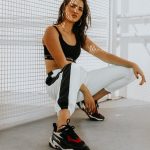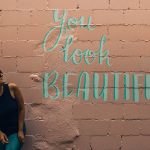
Finding the perfect outfit can be a challenge, especially when it comes to fit. Everyone’s body is unique, and certain styles and cuts may not work for everyone. However, with a little bit of knowledge and some helpful tips, you can find the perfect fit for your body type. In this blog post, we’ll explore how to dress for your body type, including selection guides, style tips, and more.
Determining Your Body Type
The first step in dressing for your body type is to determine what body type you have. Here are the five most common body types:
Hourglass: An hourglass body type has a defined waist, with the bust and hips being roughly the same size.
Pear: A pear body type has a smaller upper body, with wider hips and thighs.
Apple: An apple body type has a larger upper body, with narrower hips and thighs.
Rectangle: A rectangle body type has a straight body shape, with the bust, waist, and hips being roughly the same size.
Inverted Triangle: An inverted triangle body type has wider shoulders and a narrower waist and hips.
Selection Guide
Once you’ve determined your body type, it’s important to select clothing that flatters your figure. Here are some selection guides for each body type:
Hourglass: Choose clothing that highlights your waist, such as belted dresses or tops. Avoid clothing that is too loose or baggy, as it can hide your curves.
Pear: Look for clothing that draws attention to your upper body, such as off-the-shoulder tops or statement necklaces. Avoid clothing that accentuates your hips, such as tight-fitting pants or skirts.
Apple: Choose clothing that creates balance between your upper and lower body, such as A-line dresses or tops that cinch at the waist. Avoid clothing that emphasizes your midsection, such as form-fitting tops or high-waisted pants.
Rectangle: Look for clothing that creates the illusion of curves, such as fitted dresses or tops with ruching. Avoid clothing that is too boxy or shapeless, as it can make you look straighter.
Inverted Triangle: Choose clothing that balances out your upper body, such as V-neck tops or dresses with flared skirts. Avoid clothing that emphasizes your shoulders, such as shoulder pads or puffed sleeves.
Style Tips
In addition to selecting the right clothing, there are some style tips that can help you achieve the perfect fit:
Invest in tailoring: If you find a piece that you love but doesn’t quite fit, consider investing in tailoring. A few small adjustments can make a world of difference.
Embrace shapewear: Shapewear can smooth out any lumps or bumps and create a more streamlined silhouette.
Play with proportions: Mixing and matching different proportions can create a balanced look. For example, pair a loose-fitting top with a fitted skirt.
Layer strategically: Layering can add dimension and depth to an outfit. Try layering a long cardigan over a form-fitting dress or top.
Experiment with accessories: Accessories can add interest and personality to an outfit. Try a statement necklace or a bold scarf to add some flair.
In conclusion, finding the perfect fit is all about understanding your body type, selecting clothing that flatters your figure, and experimenting with different styles and proportions. With these helpful tips, you’ll be able to create outfits that make you feel confident and stylish.





